Vol.24 Tailored Hair by Aki – Haircut : Texture Theory Edition -Principles of movement in hair-
10.17.2023
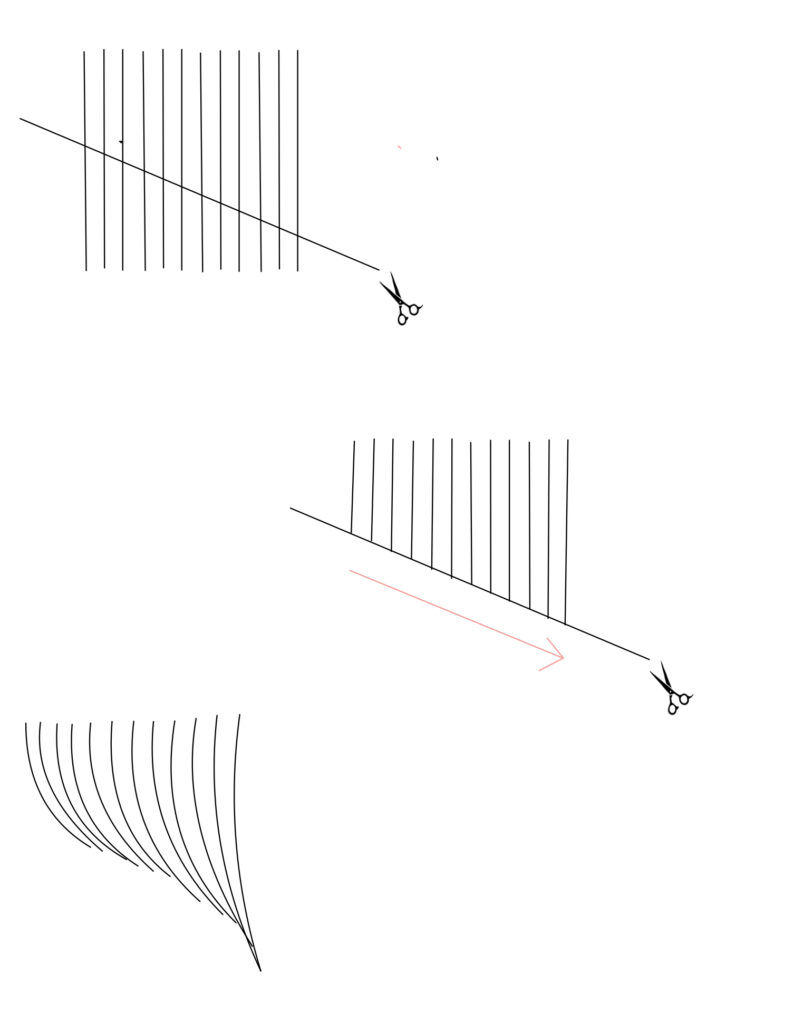
In this article, I will discuss the principles of controlling the hair, which is essential when cutting. Often we hear of the frustrations of those who are struggling with the way their hair grows or the current condition of their hair. But, if they could control it to do as they wish, everyday styling would be a breeze.
Common hair issues we hear are lack of volume, curls/ waves, flips out, tangling, and breakage. What all of these issues have in common is that the hair is moving in opposition to the ideal direction. I will show you how to resolve these directional issues without using any chemical processing or perms, and only using scissors instead.
It is completely possible to suppress volume by applying a straightening perm or adding volume and movement with perms that create curls and waves.
However, if we could solve these issues by cutting only then we can still achieve the ideal hairstyle without compromising the health of the hair. Additionally, a style that has proper directional control with cutting can be permed with minimal damage to the strands. I will dive deeper into perms later on.
The principles are rather simple.
- Hair flows in the direction of short to long.
- Hair falls down with gravity in proportion to its weight.
With these two principles in mind, you are able to move the hair to your will.
As pictured below, if you were to make a diagonal cut the directional flow of the hair would go from left to right.
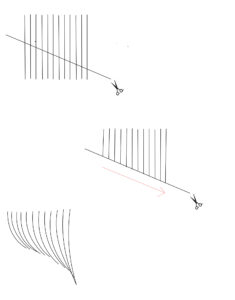
Pictured:
A. Gravity
B. Directional force flowing from short to long.
C. Small forces working upward in the direction of hair growth according to the skeletal structure.
D. The direction in which the forces of ABC work together. When the forces work in this manner the result is a lack of volume.
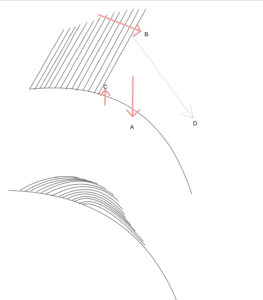
If you make a cut like the one pictured below:
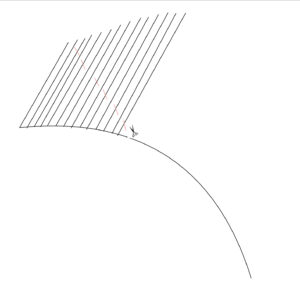
You are able to create volume.
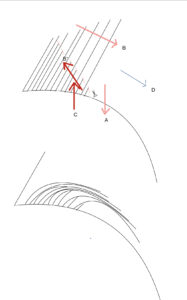
The shorter hairs exert an upward force that lifts the longer hairs, and with less weight, the hair is less susceptible to the effects of gravity.
If it is too lightweight you may end up with a dry texture however when used in moderation this technique will allow you to have full control of the volume.